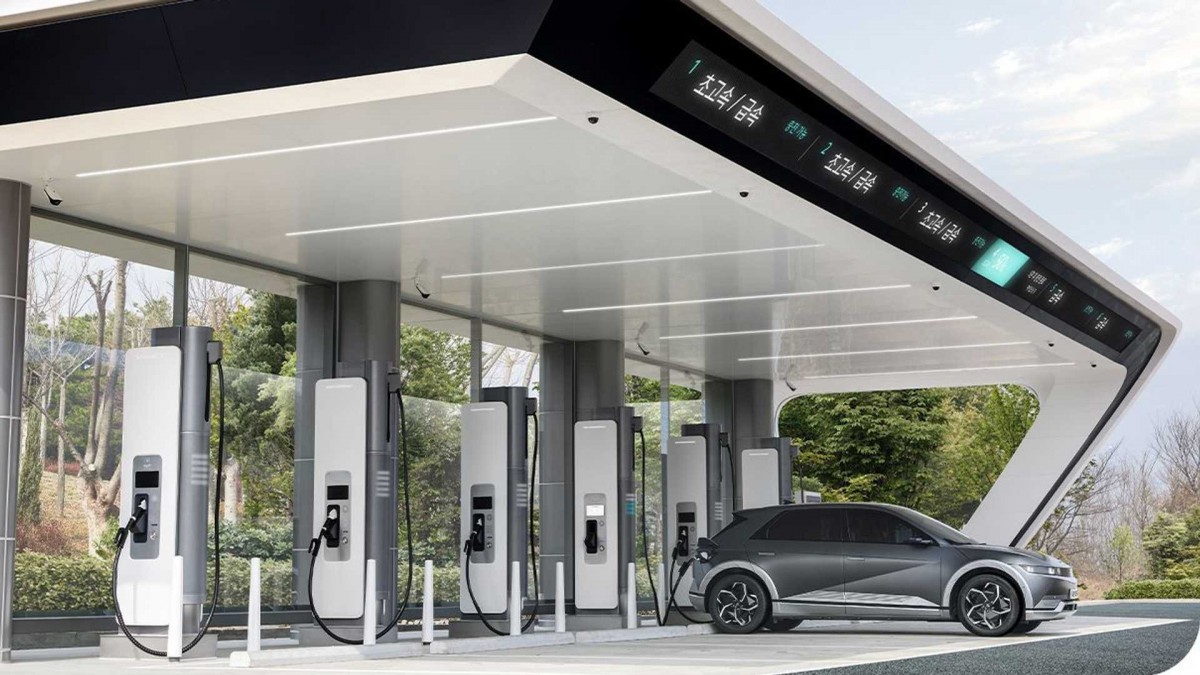Why DC charging peak power is misleading
150 kW, 200 kW, 250 kW - when it comes to the peak power of DC charging the race seemingly won't stop. But is importance of the maximum charging power of an electric car blown out of proportion? After all DC charging in an electric car’s life represents the minority of the charging sessions that will take place. 95% of the European drivers cover up to 50 km/day, so does it really matter how fast they restore the minimal used charge?
The reason that DC charging has gained importance is because manufacturers are keen to display the technological progress of their battery technology. Many people still compare the “charging power” and the time it takes to “charge” (refill) an ICE vehicle to an electric one.

And indeed, during a long trip, the DC charging is important for an electric car, but do these 200 kW, 250 kW, 300 kW rapid charging capable cars really live up to their promise? Let’s find out
Peak charging power
Peak charging power is one aspect of the equation. Lately, 800V architecture cars push the boundaries of DC charging with some examples being Lucid Air (300 kW) or the Porsche Taycan and Audi E-tron GT duo (270 kW).
In the 400V world, Tesla has the lead with 250kW peak charging power in V3 superchargers. On the opposite side, cars with lower charging rates are those with air-cooled batteries such as Nissan Leaf (50 kW) and the Skoda Citigo, VW e-up! duo (40 kW).
In the following table the peak charging rates and expected range per minute of charging are calculated. The expected range per minute of charging is calculated using the expected electricity consumption at 130 km/h on the highway, the typical scenario when DC charging is most needed and most frequently used.
| Model | Peak Charging power (kW) | Estimated consumption at 130km/h (kWh/100km) | Range/minute of charging in peak power (km) |
|---|---|---|---|
| Lucid Air | 300 | 21 | 23.8 |
| Porsche Taycan | 270 | 24 | 18.8 |
| Tesla Model S | 250 | 21 | 19.8 |
| Kia EV6 | 233 | 26 | 14.9 |
| Mercedes EQS | 200 | 23 | 14.5 |
| Peugeot e-208 | 100 | 26 | 6.4 |
| Nissan Leaf e+ | 50 | 26 | 3.2 |
| VW e-up! | 40 | 23 | 2.9 |
The charging curve
Peak DC charging power is definitely important and indicative of the technological level of the electric vehicle. But what counts more for the everyday driver is the mean DC charging power for the typical range from 10% up to 80%.
In an ideal world the peak DC charging power would align with charging times, but alas this is not the case. The high voltage batteries can sustain peak charging power only for a small amount of time and only at certain charging levels.

The charging curves are different for each car and depend mainly on the specifications of the battery and the handling of charging from the BMS (Battery Management System). The decrease in charging power is actually a safety mechanism in order to avoid excessive heat in the battery and at higher battery charge levels cell balancing takes place which limits charging power.
In the following table we explore real world data and the expected range per minute of charging using mean charging power from 10-80%. It seems that the top performers have mean DC charging power that peaks around 175-180 kW, even though their peak DC charging power is far higher. The mean charging power has been calculated with data taken from the charging curves provided by Fastned.
| Model | Mean charging power 0-80% (kW) | Estimated consumption at 130 km/h (kWh / 100km) | Range/minute of charging with mean power (km) |
|---|---|---|---|
| Lucid Air | 175 | 21 | 13.89 |
| Porsche Taycan | 147 | 24 | 10.21 |
| Tesla Model S | 180 | 21 | 14.29 |
| Kia EV6 | 175 | 26 | 11.22 |
| Mercedes EQS | 180 | 23 | 13.04 |
| Peugeot e-208 | 65 | 26 | 4.17 |
| Nissan Leaf e+ | 43 | 26 | 2.76 |
| VW e-up! | 27 | 23 | 1.96 |
Conclusions
It turns out that no matter what the maximum charging power a car can receive is, they all seem to hit a plateau of around 180 kW for the mean charging power during a typical DC charging session to 80%. And that actually makes sense from a technology standpoint.
Most electric cars nowadays use Li-Ion NMC chemistry batteries with few variations between them. Because this 180 kW mean charging power is agnostic to the voltage (400 or 800V), it seems that this is the technological limit of the current chemistries. Perhaps we'll be able to surpass this limit with a technological breakthrough such as Li-Air or solid state chemistries. Time will tell.
 DC charging stations are the sign of the future
DC charging stations are the sign of the future
Reader comments
- Anonymous
- Lxf
Just read the 10-80% DC charging time for all vehicles. For a Zeekr 007 with 5.5C fast charging its around 11 minutes. Calculations not needed, look at the time when using DC charger, that's it. It's not misleading.
- Anonymous
- 04N
apple si garbage liar company who sell oboslete tech like 2024 60 hz in 2024 15w ultra slow charge ugly notch tiny battery iphone made in china aroud 5$ sold to dumb customers 1500$ no wonder why apple users are poor
- Anonymous
- 04N
ap[ple is misleading garbage company who lie and sell same 60 hz like 120 hz apple is scam





Facebook
Twitter
Instagram
RSS
Settings
Log in I forgot my password Sign up